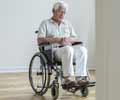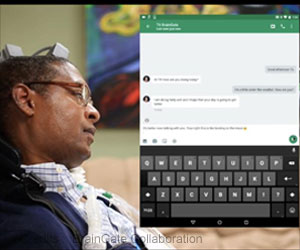Paralyzed man walks again after connecting his brain to his spine via Bluetooth.
- AI and neurology enable a paraplegic man to walk again using just his thoughts
- This remarkable achievement is the result of the efforts of a group of neuroscientists in Switzerland whose work on brain-machine interfaces to overcome paralysis
- This achievement represents a significant leap in the field of neurotechnology and provides hope to individuals who are paralyzed
Walking naturally after spinal cord injury using a brain–spine interface
Go to source).
However, with the help of an implant known as a "digital bridge," which reads brain waves and wirelessly sends instructions to his spine, Oskam can now utilize the necessary muscles to stand and walk.
Digital Bridge Implant to the Rescue
The "digital bridge" implant was developed by a team of neuroscientists based in Switzerland working on a program focused on assisting paralyzed individuals in overcoming their limitations through wireless brain-machine interfaces.Since the surgical implantation of the device, Oskam has achieved significant milestones, including climbing stairs and walking up to 100 meters at a time. He expressed joy at standing up and socializing with friends after 10 years and is looking forward to integrating the device into his daily life.
Previous tests involved a different interface, where Oskam was able to walk by receiving computer-generated signals intermittently through button presses. Although he could take multiple steps simultaneously, the movements appeared robotic.
The latest version of the device, however, includes brain electrodes that identify neural activity whenever Oskam intends to use his legs. This neural activity is then converted into impulses and sent to spinal electrodes, generating desired leg movements.
Reinstating the Communication Between Brain and Spine
Grégoire Courtine from the Swiss Federal Institute of Technology in Lausanne explained that the "digital bridge" re-establishes communication between the brain and the specific region of the spinal cord responsible for controlling leg movement.Impressively, the device has also enabled Oskam to regain some control over his legs, even when the device is turned off. This is possible because not all the nerves in his spine were completely severed.
Oskam's positive response to the device, even a decade after his life-altering accident, instills confidence in the potential success of such technology, especially for patients who have recently experienced similar injuries.
Reference:
- Walking naturally after spinal cord injury using a brain–spine interface - (https://www.nature.com/articles/s41586-023-06094-5)
Source-Medindia














